Walking Through Time: Exploring Jordan's Ancient Wonders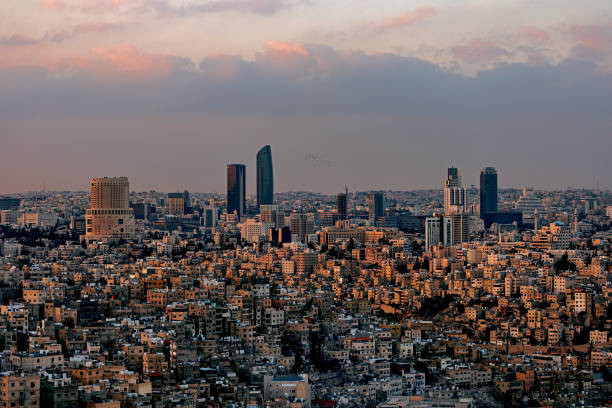
Is an immersive journey into the heart of one of the Middle East's most historically rich and culturally diverse countries. Jordan, a land where ancient civilizations have left their indelible marks, offers travelers a unique opportunity to step back in time and witness the grandeur of human history. From the rose-red city of Petra to the Roman ruins of Jerash, and the stark beauty of Wadi Rum, Jordan is a treasure trove of archaeological wonders and natural beauty.
The journey begins in Petra, the crown jewel of Jordan and a UNESCO World Heritage Site. Carved into the red sandstone cliffs by the Nabataeans over 2,000 years ago, Petra is a testament to the ingenuity and artistry of this ancient civilization. As you walk through the narrow Siq, a dramatic canyon that leads to the city, the anticipation builds until you finally catch your first glimpse of the iconic Treasury (Al-Khazneh). Its intricate façade, adorned with columns and statues, is a breathtaking sight. Beyond the Treasury, Petra unfolds into a sprawling city of tombs, temples, and amphitheaters, each telling a story of a bygone era. The Monastery (Ad-Deir), perched high on a mountain, offers a challenging but rewarding hike with panoramic views of the surrounding landscape.
From Petra, the journey takes you north to Jerash, one of the best-preserved Roman cities outside of Italy. Known as the "Pompeii of the East," Jerash boasts an impressive array of ruins, including the Oval Plaza, the Temple of Artemis, and the grand colonnaded streets. Walking through Jerash, you can almost hear the echoes of chariot wheels and the chatter of ancient marketplaces. The city's well-preserved theaters and baths provide a glimpse into the daily life of its inhabitants, while the massive Hadrian's Arch stands as a symbol of the city's importance during the Roman Empire.
No exploration of Jordan's ancient wonders would be complete without a visit to Wadi Rum, a desert landscape of towering sandstone cliffs and vast, open plains. Known as the "Valley of the Moon," Wadi Rum has been home to nomadic Bedouin tribes for centuries and has inspired countless tales of adventure. The desert's otherworldly beauty has also served as the backdrop for numerous films, including "Lawrence of Arabia." A jeep tour or camel ride through Wadi Rum allows you to experience the stark, timeless beauty of this desert, while a night under the stars in a traditional Bedouin camp offers a chance to connect with the region's rich cultural heritage.
Finally, a visit to the Dead Sea, the lowest point on Earth, provides a unique and rejuvenating experience. The mineral-rich waters and mud of the Dead Sea are renowned for their therapeutic properties, and floating effortlessly on the surface is a once-in-a-lifetime experience.
"Walking Through Time: Exploring Jordan's Ancient Wonders" is more than just a journey through history; it is an exploration of the resilience and creativity of human civilization. Jordan's ancient sites, set against a backdrop of stunning natural landscapes, offer a profound connection to the past and a deeper understanding of the enduring spirit of humanity. Whether you are an avid historian, an adventurous traveler, or simply someone in search of beauty and inspiration, Jordan's ancient wonders promise an unforgettable experience.
Must-Visit Ancient Sites
Jordan, a country steeped in history and culture, is home to some of the most remarkable ancient sites in the world. These sites offer a glimpse into the civilizations that once thrived in this region, from the Nabataeans to the Romans and beyond. Here are some must-visit ancient sites in Jordan:
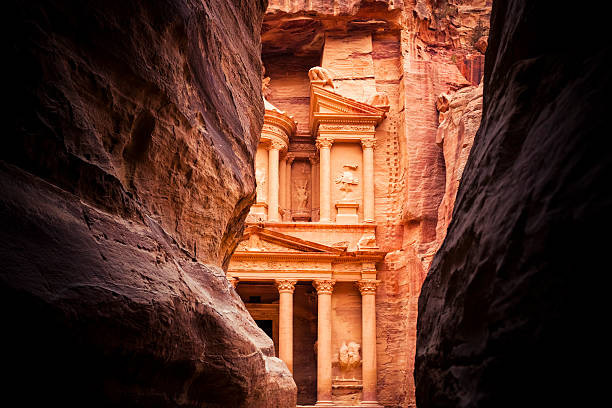
No visit to Jordan is complete without exploring Petra, the crown jewel of the country and one of the New Seven Wonders of the World. Carved into the rose-red sandstone cliffs by the Nabataeans over 2,000 years ago, Petra is a breathtaking archaeological marvel. The iconic Al-Khazneh (The Treasury) greets visitors as they pass through the narrow Siq, a dramatic canyon that leads to the ancient city. Beyond the Treasury, Petra unfolds into a sprawling site with tombs, temples, and an ancient theater. Highlights include the Monastery (Ad-Deir), the Royal Tombs, and the High Place of Sacrifice. Petra’s grandeur and mystique make it a bucket-list destination for history enthusiasts and adventurers alike.
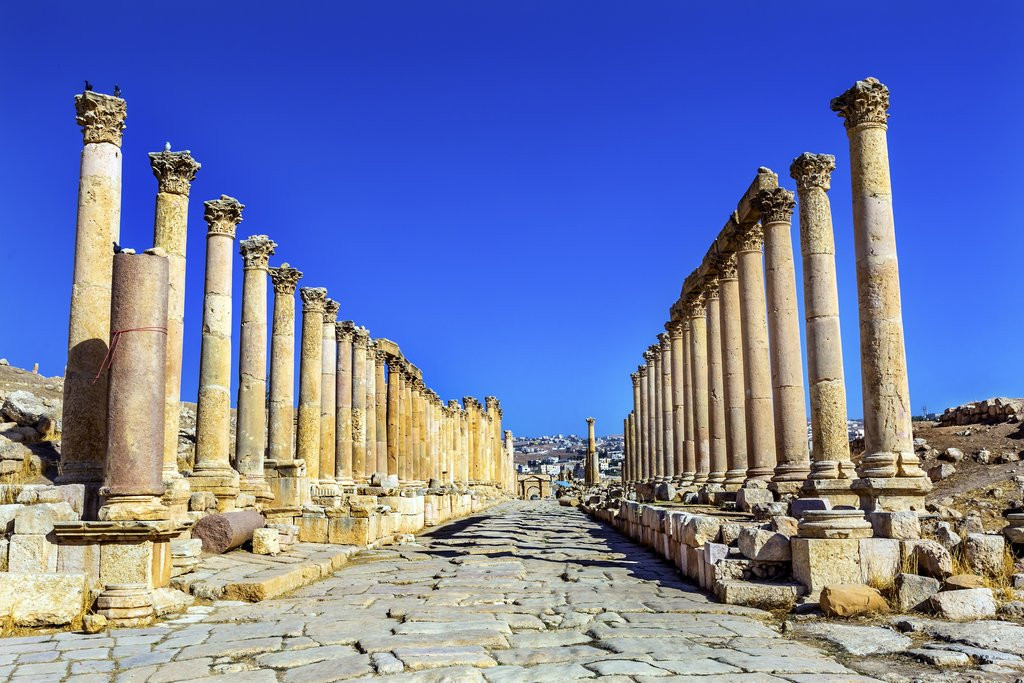
Often referred to as the "Pompeii of the East," Jerash is one of the best-preserved Roman cities outside of Italy. Located in northern Jordan, this ancient city boasts stunning ruins, including the Oval Plaza, the Cardo Maximus (main street), and the Temple of Artemis. The South Theater, which still hosts performances today, is a testament to the city’s vibrant past. Walking through Jerash feels like stepping back in time, as its colonnaded streets, arches, and temples offer a vivid picture of life during the Roman Empire.
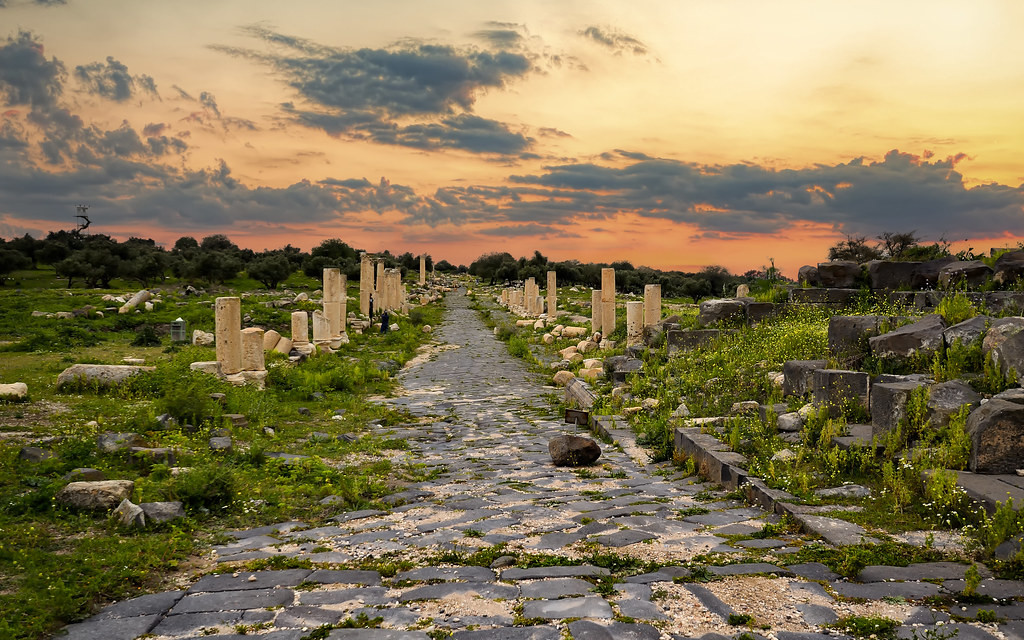
Perched on a hilltop overlooking the Sea of Galilee and the Golan Heights, Umm Qais is another fascinating Roman site. Known in ancient times as Gadara, this city was part of the Decapolis, a league of ten cities in the Roman Empire. The ruins include a Roman theater, a basilica, and the Decumanus Maximus, a main street lined with columns. The site’s strategic location offers panoramic views of the surrounding landscapes, making it a perfect spot for history and nature lovers.
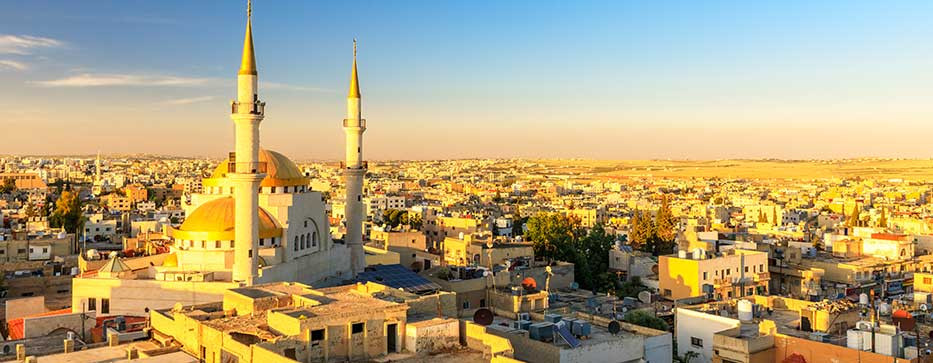
Known as the "City of Mosaics," Madaba is famous for its Byzantine and Umayyad mosaics, the most notable of which is the Madaba Map. This 6th-century mosaic, located in the Church of St. George, is the oldest surviving map of the Holy Land. Madaba is also home to several other mosaic-rich sites, including the Madaba Archaeological Park and the Church of the Apostles. The city’s artistic heritage and religious significance make it a unique destination.
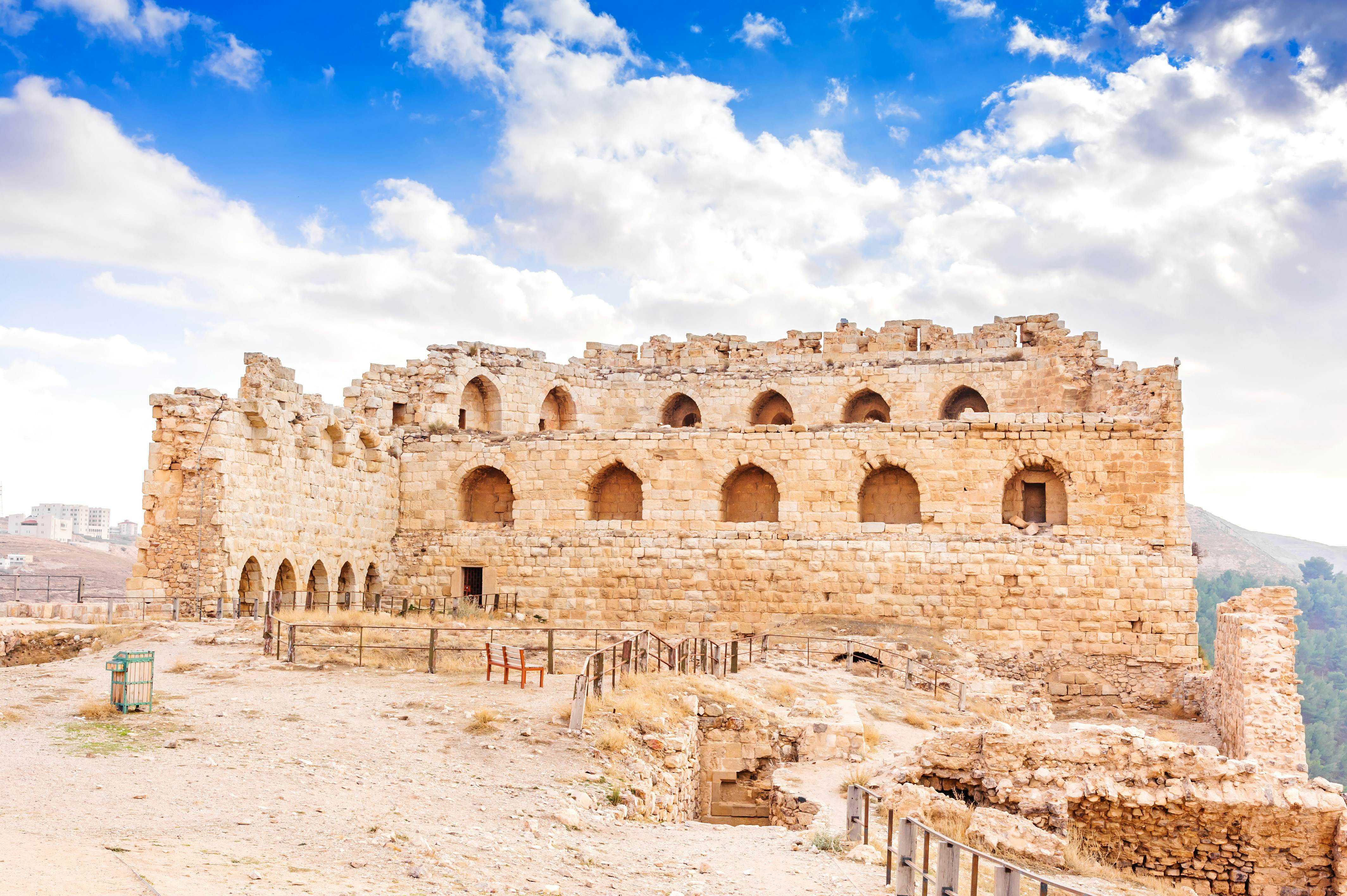
Dating back to the Crusader era, Karak Castle is a massive fortress that stands as a testament to the region’s medieval history. Built in the 12th century, the castle features a labyrinth of passageways, chambers, and defensive structures. Its strategic location on the King’s Highway provided control over trade routes between Egypt, Syria, and Arabia. Exploring Karak Castle offers insight into the Crusaders’ military architecture and the turbulent history of the region.

A UNESCO World Heritage Site, Qasr Amra is a desert castle that showcases early Islamic art and architecture. Built in the 8th century during the Umayyad period, this small fortress is renowned for its frescoes, which depict scenes of hunting, bathing, and celestial imagery. The site’s intimate size and artistic details make it a hidden gem for those interested in Islamic history.
- Shobak Castle ( Montreal)
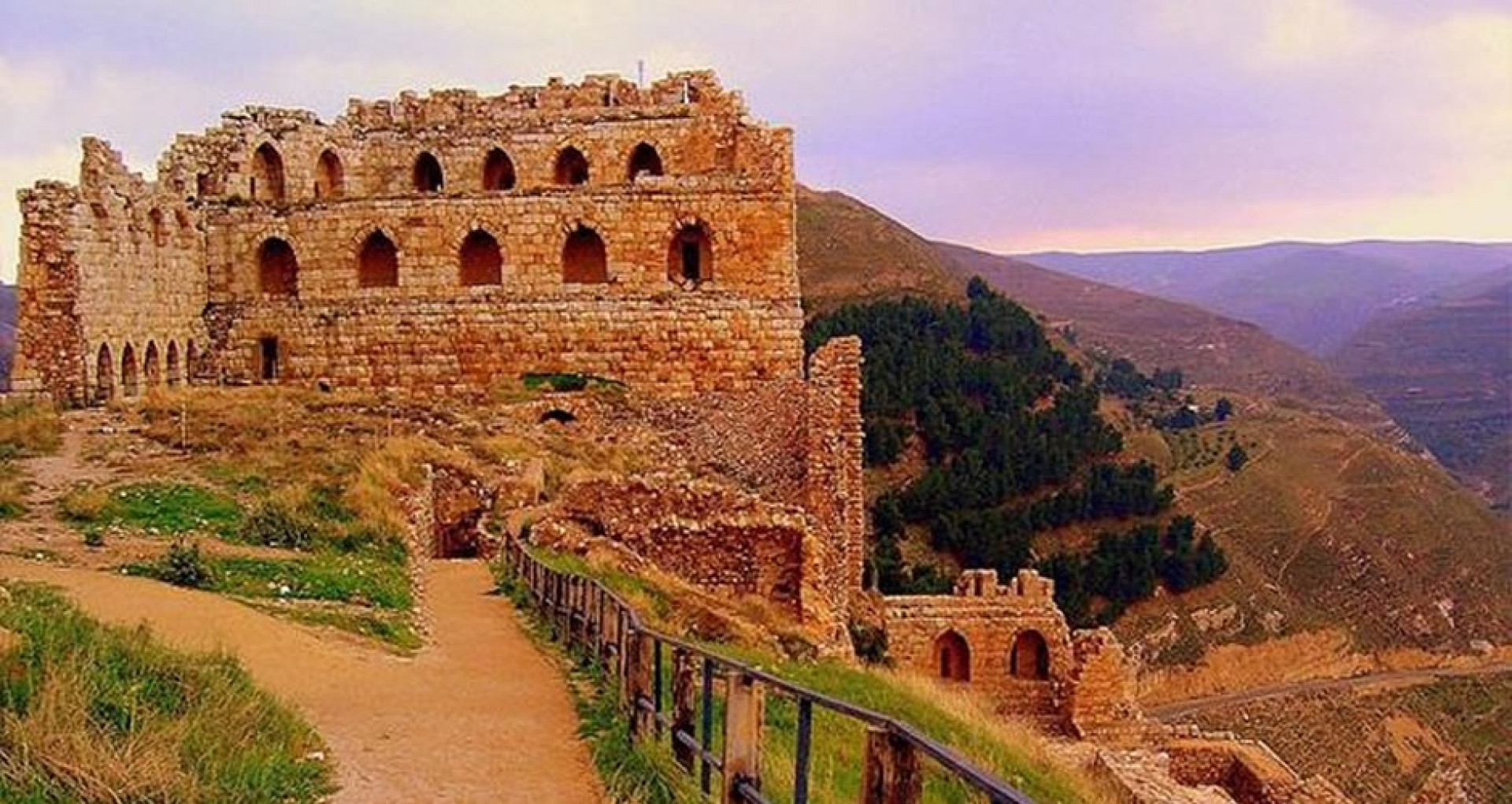
Another Crusader fortress, Shobak Castle, is perched on a hilltop and offers stunning views of the surrounding desert. Built in 1115 by King Baldwin I of Jerusalem, the castle played a crucial role during the Crusades. Its remote location and rugged ruins provide a sense of adventure for visitors.
Jordan’s ancient sites are not just relics of the past; they are living testaments to the civilizations that shaped the region. Each site offers a unique story, making Jordan a treasure trove for history buffs and curious travelers alike.
Jordan is a country rich in history, culture, and natural beauty, offering a wide range of activities and experiences for travelers. Here are some must-do activities and experiences in Jordan:
Historical and Cultural Experiences
Visit the iconic ancient Nabatean city of Petra, a UNESCO World Heritage Site and one of the New Seven Wonders of the World. Don’t miss the Treasury (Al-Khazneh), the Monastery (Ad-Deir), and the Siq.
Take a guided tour to learn about the history and significance of this archaeological marvel.
Explore the well-preserved Roman ruins of Jerash, including the Oval Plaza, Hadrian’s Arch, and the Temple of Artemis.
Wander through the Citadel, Roman Theater, and the bustling streets of downtown Amman.
Visit the Jordan Museum to see the Dead Sea Scrolls.
Visit this ancient Greco-Roman city with stunning views of the Sea of Galilee and the Golan Heights.
See the famous mosaic map of the Holy Land in St. George’s Church and explore other Byzantine-era mosaics.
Natural Wonders
Experience the buoyancy of the Dead Sea, the lowest point on Earth, and enjoy its mineral-rich mud.
Explore the stunning desert landscapes of Wadi Rum, also known as the "Valley of the Moon." Take a jeep tour, camel ride, or even spend a night in a Bedouin camp.
Go canyoning or hiking in the Wadi Mujib Biosphere Reserve, with its dramatic gorges and waterfalls.
Enjoy the Red Sea’s clear waters for snorkeling, diving, or simply relaxing on the beach.
Hike through Jordan’s largest nature reserve, home to diverse wildlife and stunning landscapes.
Adventure Activities
Explore Jordan’s many wadis (valleys) and canyons, such as Wadi Bin Hammad or Wadi Ghuweir.
Spend a night under the stars in a traditional Bedouin camp.
Try rock climbing in Wadi Rum or Wadi Mujib.
Take a hot air balloon ride over the desert or the Dead Sea for breathtaking views.
Religious and Spiritual Experiences
See the spot where Moses is said to have viewed the Promised Land.
Visit the baptism site of Jesus, a UNESCO World Heritage Site.
Hike to the shrine on Jabal Haroun near Petra.
Culinary Experiences
Sample traditional dishes like mansaf (Jordan’s national dish), maqluba, and falafel.
Enjoy Arabic coffee and tea with locals.
Learn to cook Jordanian dishes from local chefs.
Explore the souks in Amman or Aqaba for spices, sweets, and handicrafts.
Unique Experiences
Experience glamping in Wadi Rum with modern amenities and traditional Bedouin hospitality.
Explore a collection of vintage cars owned by Jordan’s royal family.
Check out local festivals, such as the Jerash Festival of Culture and Arts.
Buy traditional Jordanian crafts like pottery, mosaics, and handmade rugs.
Explore this oasis in the desert and spot migratory birds.
Tips for Travelers
- Respect local customs and dress modestly, especially in rural areas.
- Hire local guides for historical sites to gain deeper insights.
- Stay hydrated and protect yourself from the sun, especially in desert areas.
- Consider purchasing the Jordan Pass for entry to many attractions and visa fees.
Jordan is a destination that offers something for everyone, from history buffs and adventure seekers to those looking to relax and immerse themselves in culture.
Best time to visit
The best time to visit Jordan is during the spring (March to May) and autumn (September to November) seasons. During these months, the weather is pleasant, with mild temperatures and clear skies, making it ideal for exploring the country's famous landmarks and natural attractions. Here's a breakdown of the seasons in Jordan:
Weather: Temperatures range from 15°C to 25°C (59°F to 77°F), with cooler evenings.
Pros: Wildflowers bloom, especially in the desert areas like Wadi Rum, making the landscapes particularly beautiful. It's a great time for outdoor activities like hiking in Petra, exploring Jerash, and floating in the Dead Sea.
Crowds: Moderate, but it can get busier around Easter.
- Autumn (September to November):
Weather: Similar to spring, with temperatures ranging from 20°C to 30°C (68°F to 86°F).
Pros: The weather is warm but not too hot, perfect for visiting historical sites and natural wonders. The sea is still warm enough for swimming in Aqaba.
Crowds: Moderate, but it can get busier around the Eid holidays.
Weather: Extremely hot, especially in the desert areas, with temperatures often exceeding 35°C (95°F) and sometimes reaching 40°C (104°F) or more.
Pros: Fewer tourists, lower prices, and the chance to experience the culture without the crowds.
Cons: The heat can be overwhelming, making outdoor activities uncomfortable.
- Winter (December to February):
Weather: Cooler, with temperatures ranging from 5°C to 15°C (41°F to 59°F). In higher elevations like Petra and Amman, it can get quite cold, and there may be occasional rain or even snow.
Pros: Fewer tourists, and the cooler weather can be refreshing for exploring.
Cons: Some outdoor activities may be less enjoyable due to the cold, and some sites may close early.
Special Considerations:
Ramadan: If you visit during Ramadan (the Islamic holy month), be aware that many restaurants and shops may be closed during the day, and the pace of life slows down. However, evenings can be festive with special meals and events.
Easter and Christmas: These are popular times for tourists, especially in Petra, so expect larger crowds and higher prices.
WEBSITE:- https://www.relaxgetaways.com/classic-jordan-tour








